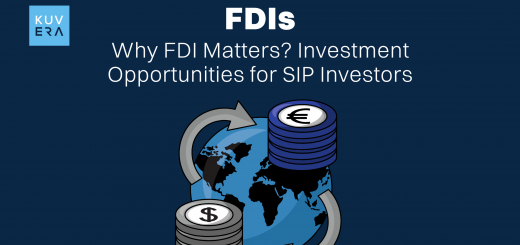Imagine you had invested ₹1 lakh on 23rd January 2015. Today (i.e., 23rd January 2025), you could have ended up with ₹6.9 lakh. Yes. You could have increased your investment by almost seven times. That’s the power of compounding.
Mutual funds have been a cornerstone for wealth creation. A easy way to diversify your portfolio and earn high returns. Over the last decade, several funds have consistently outperformed, delivering exceptional.
Let’s explore the mutual funds that gave the highest returns over the past 10 years.
What Are Mutual Funds?
A mutual fund pools money from many investors to invest in a diversified portfolio of equities, bonds and other securities. They are managed by experienced fund managers and aim to generate returns in line with the fund’s objectives, whether it is growth, regular income or just for capital preservation.
Top-Performing Mutual Funds Over the Last Decade
| S. no. | Fund Name | AUM (₹ in crore) | 10 Year Returns (%) | 10 Year Returns (Growth of ₹1 lakh) | Expense Ratio (%) |
|---|---|---|---|---|---|
| 1 | Nippon India Small Cap Fund | 61,974 | 21.35 | 692,298 | 0.68 |
| 2 | Quant Small Cap Fund | 26,670 | 20.32 | 635,667 | 0.65 |
| 3 | Quant ELSS Tax Saver Fund | 10,513 | 20.16 | 627,348 | 0.59 |
| 4 | Motilal Oswal Midcap Fund | 26,421 | 19.42 | 589,684 | 0.65 |
| 5 | Edelweiss Mid Cap Fund | 8,666 | 18.74 | 557,256 | 0.38 |
| 6 | Quant Mid Cap Fund | 8,891 | 18.56 | 548,579 | 0.59 |
| 7 | Kotak Emerging Equity Fund | 53,079 | 18.35 | 539,034 | 0.38 |
| 8 | Motilal Oswal ELSS Tax Saver Fund | 4,415 | 18.31 | 537,267 | 0.64 |
| 9 | Invesco India Mid Cap Fund | 6,150 | 18.20 | 532,361 | 0.58 |
| 10 | Parag Parikh Flexi Cap Fund | 87,539 | 17.98 | 522,556 | 0.63 |
10. Parag Parikh Flexi Cap Fund
- 10-Year CAGR: 17.98%
- Growth of ₹1 lakh: ₹5.2 lakh
- AUM: ₹87,539 crore
- Expense Ratio: 0.63%
Parag Parikh Flexi Cap Fund leverages its flexibility to invest across large-cap, mid-cap and small-cap stocks globally. The fund’s mechanism includes a thorough analysis of international markets and companies like Alphabet and Microsoft to ensure diversification. It also emphasises long-term value investing to minimise risks and maximise returns.
9. Invesco India Mid Cap Fund
- 10-Year CAGR: 18.20%
- Growth of ₹1 lakh: ₹5.3 lakh
- AUM: ₹6,150 crore
- Expense Ratio: 0.58%
Invesco India Mid Cap Fund emphasises mid-cap companies with strong growth trajectories. Its mechanism includes comprehensive sector analysis and a focus on companies with business models with potential and competitive advantages. It invests in industries like finance, engineering and chemicals to ensure diversification.
8. Motilal Oswal ELSS Tax Saver Fund
- 10-Year CAGR: 18.31%
- Growth of ₹1 lakh: ₹5.3 lakh
- AUM: ₹4,415 crore
- Expense Ratio: 0.64%
This ELSS fund offers tax savings while focusing on mid-cap stocks with growth potential. The fund’s mechanism relies on identifying sector leaders and companies with financial performance. It maintains a diversified portfolio across sectors like consumer goods, IT and pharmaceuticals.
7. Kotak Emerging Equity Fund
- 10-Year CAGR: 18.35%
- Growth of ₹1 lakh: ₹5.4 lakh
- AUM: ₹53,079 crore
- Expense Ratio: 0.38%
The Kotak Emerging Equity Fund specialises in mid-cap companies with comparatively higher growth potential. The fund’s mechanism involves rigorous stock screening based on financial health, market position and growth prospects. It invests across diverse industries, including software, pharmaceuticals and auto ancillaries, to create a balanced portfolio with potentially higher returns.
6. Quant Mid Cap Fund
- 10-Year CAGR: 18.56%
- Growth of ₹1 lakh: ₹5.5 lakh
- AUM: ₹8,891 crore
- Expense Ratio: 0.59%
The Quant Mid Cap Fund focuses on mid-cap stocks with significant growth potential. Its mechanism includes a mix of bottom-up stock selection and top-down macroeconomic analysis. This approach ensures the identification of companies with strong financials and scalable business models across diverse sectors like healthcare, banking and IT.
5. Edelweiss Mid Cap Fund
- 10-Year CAGR: 18.74%
- Growth of ₹1 lakh: ₹5.6 lakh
- AUM: ₹8,666 crore
- Expense Ratio: 0.38%
Edelweiss Mid Cap Fund follows a growth-oriented approach, focusing on mid-cap stocks with strong fundamentals. The fund’s mechanism involves identifying industry trends and companies poised to benefit from them. Its portfolio spans sectors like specialised finance and engineering, with a comparatively lower expense ratio that improves net returns.
4. Motilal Oswal Midcap Fund
- 10-Year CAGR: 19.42%
- Growth of ₹1 lakh: ₹5.9 lakh
- AUM: ₹26,421 crore
- Expense Ratio: 0.65%
The Motilal Oswal Midcap Fund targets mid-cap companies that are leaders in their respective industries. The fund employs a “buy right, sit tight” philosophy, focusing on high-quality businesses with competitive advantages. Its sector allocation includes IT, chemicals and healthcare.
3. Quant ELSS Tax Saver Fund
- 10-Year CAGR: 20.16%
- Growth of ₹1 lakh: ₹6.3 lakh
- AUM: ₹10,513 crore
- Expense Ratio: 0.59%
This ELSS fund combines tax savings with capital growth by investing in a mix of large and mid-cap stocks. The fund’s mechanism involves targeting companies with strong financials and growth trajectories, particularly in sectors like engineering, pharmaceuticals and consumer goods. Its tax-saving feature is a significant draw for you, if you are looking for dual benefits.
2. Quant Small Cap Fund
- 10-Year CAGR: 20.32%
- Growth of ₹1 lakh: ₹6.4 lakh
- AUM: ₹26,670 crore
- Expense Ratio: 0.65%
Quant Small Cap Fund employs a diverse investment strategy focused on small-cap stocks which have strong growth prospects. The fund leverages quantitative models and macroeconomic analysis to determine asset allocation and sector focus. This proactive approach allows the fund to adapt to changing market conditions and capitalise on trends in sectors like pharmaceuticals, food processing and telecom.
Last but but not the least:
1. Nippon India Small Cap Fund
- 10-Year CAGR: 21.35%
- Growth of ₹1 lakh: ₹6.9 lakh
- AUM: ₹61,974 crore
- Expense Ratio: 0.68%
The Nippon India Small Cap Fund focuses on investing in small-cap companies with potentially higher growth potential. The fund’s mechanism involves identifying emerging businesses across sectors like chemicals, banking and engineering. It uses in-depth market research and a bottom-up approach to select companies that are fundamentally strong and positioned for long-term growth. The portfolio is actively managed to capitalise on opportunities while mitigating risks through diversification.
Key Takeaways From These Mutual Funds
1. Consistency Through Market Cycles
These funds have demonstrated growth across various market conditions, making them suitable for long-term investment.
2. Power of Compounding
A 10-year horizon allows the benefits of compounding to significantly increase the value of your investments.
3. Expense Ratio Matters
Funds with lower expense ratios, such as Edelweiss Mid Cap Fund, maximise investor returns over time.
Wrapping Up
The last decade has seen record-breaking performances from these mutual funds, each excelling due to its investment strategy and sector focus. Whether you are a young investor just starting your financial journey or someone looking to diversify your portfolio, these funds offer great opportunities for growth.
Interested in how we think about the markets?
Read more: Zen And The Art Of Investing
Watch here: Rebalancing for Mutual Fund Investors












